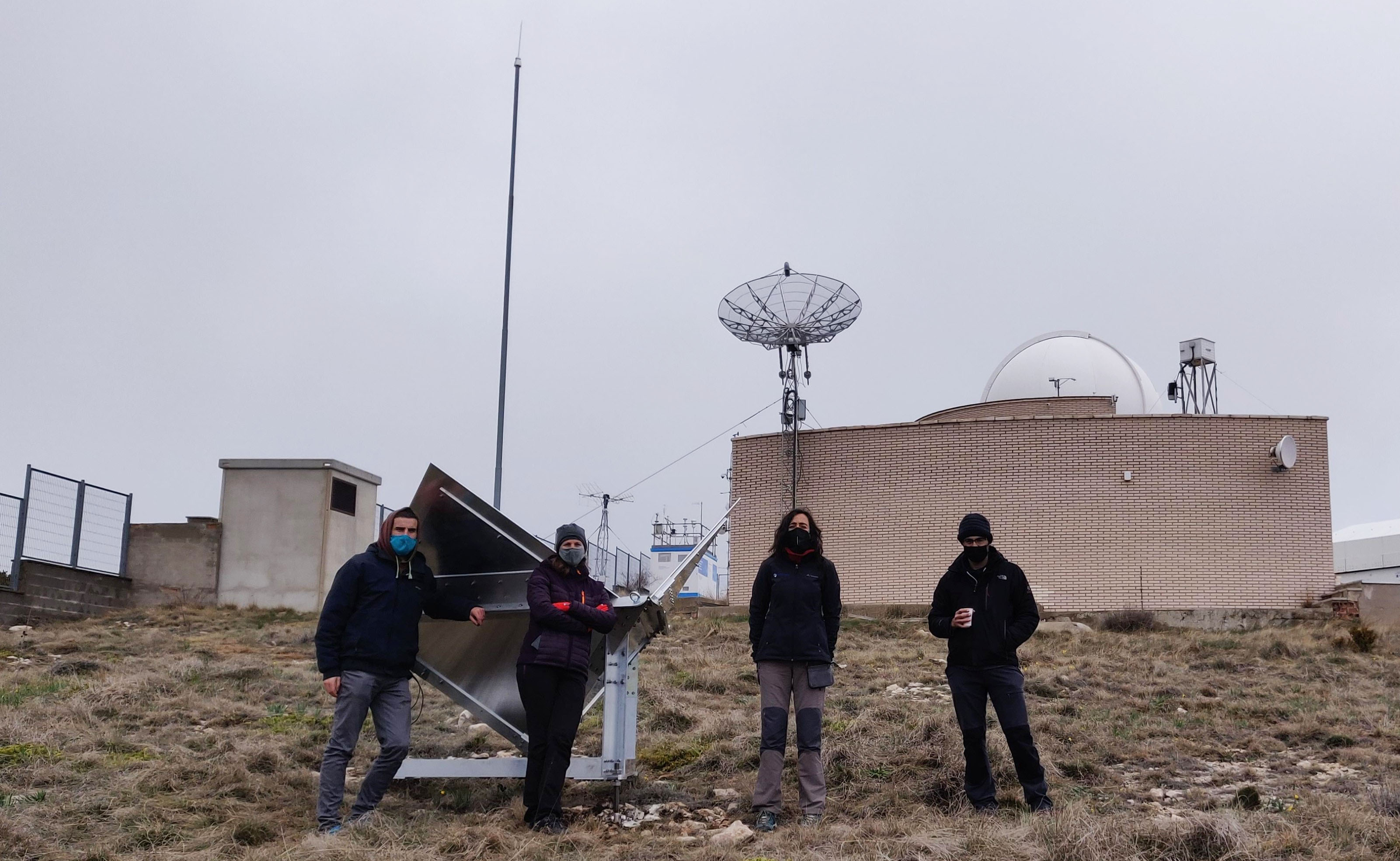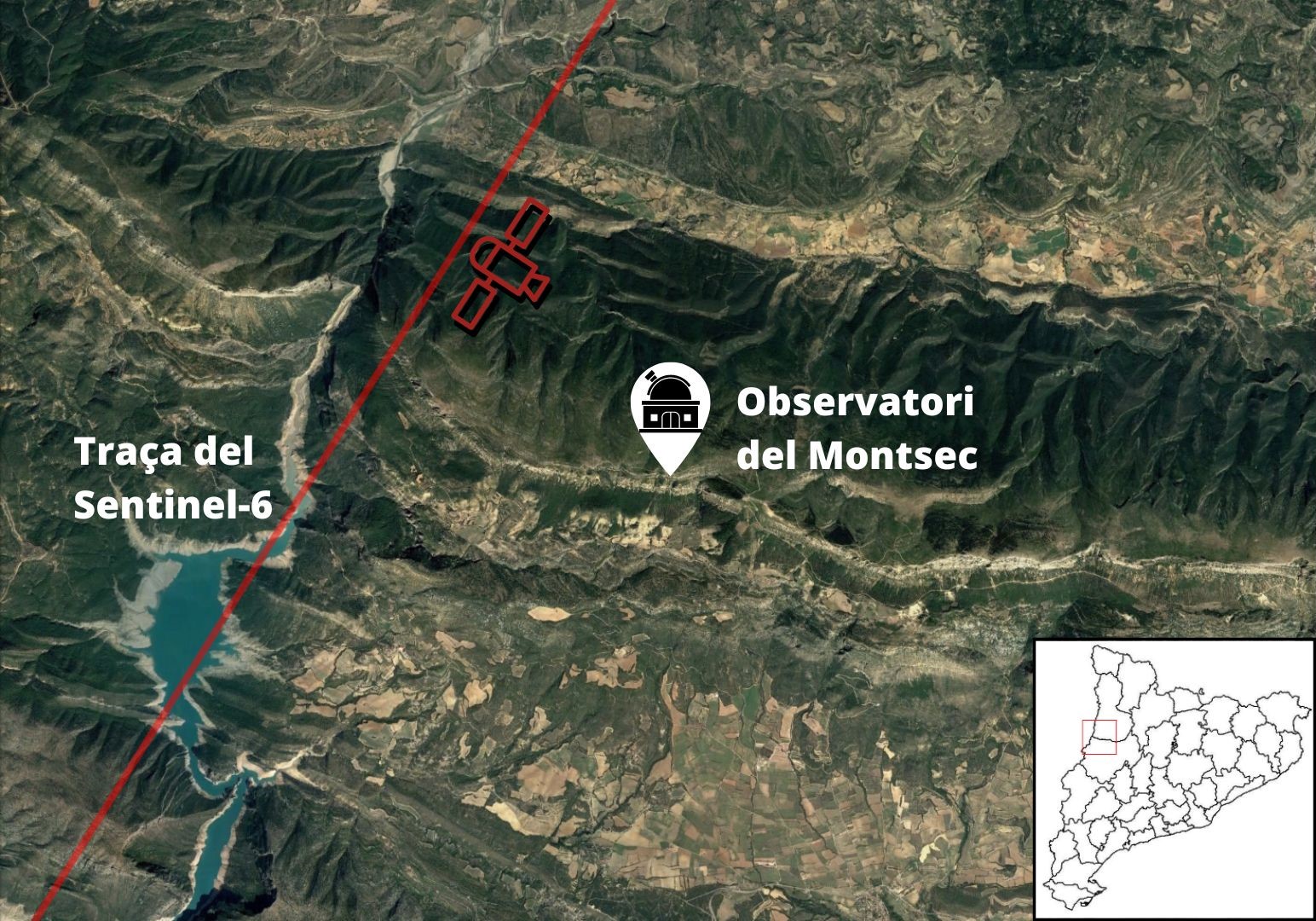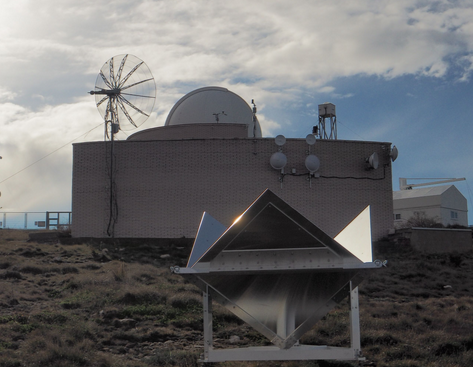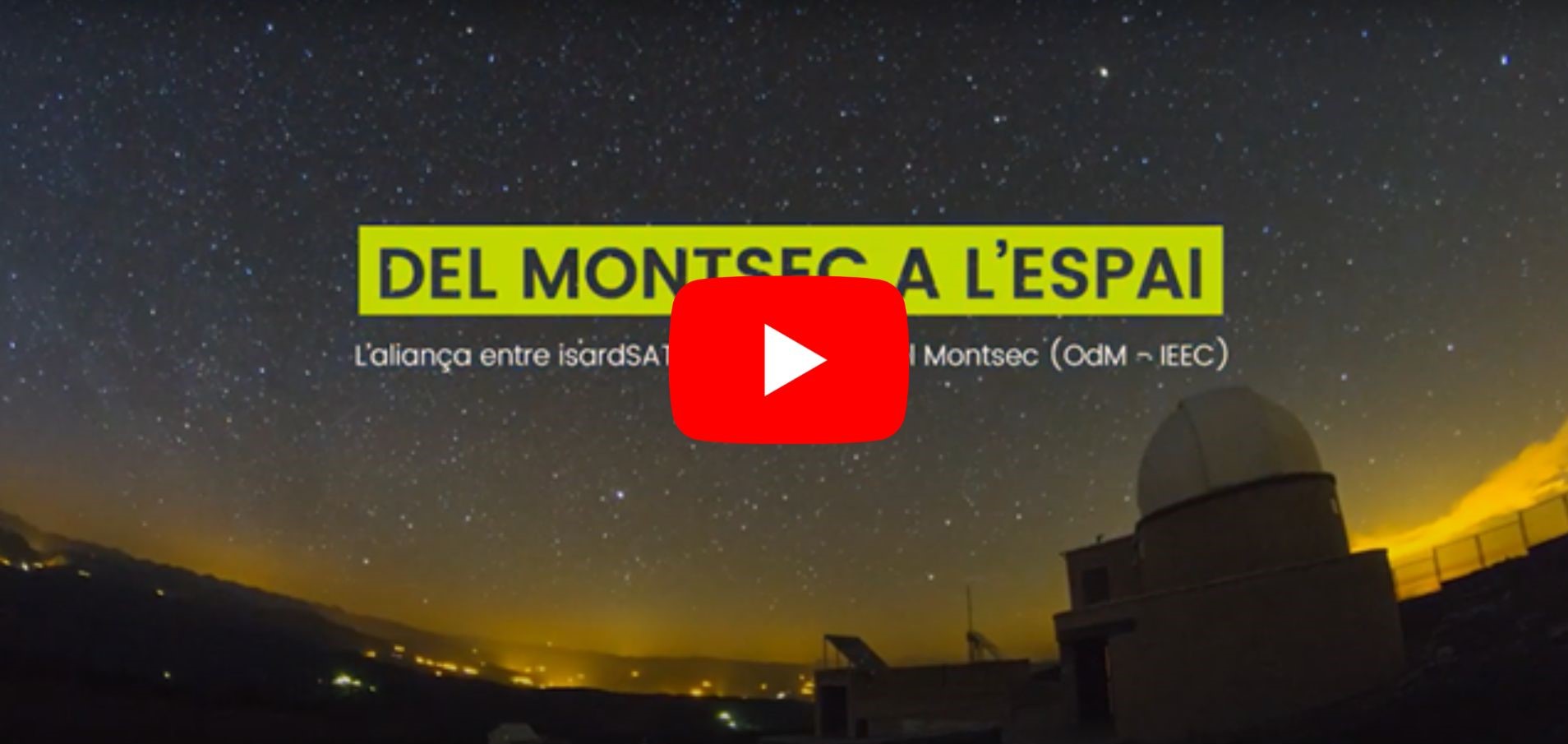 The isardSAT team installed the reflector at the Montsec Observatory in April 2021.
Credit: isardSAT
The isardSAT team installed the reflector at the Montsec Observatory in April 2021.
Credit: isardSAT
isardSAT has designed and installed at the Montsec Observatory a corner reflector to calibrate the altimeter onboard of Sentinel-6, Poseidon-4. This device has demonstrated exceptional performance, comparable to that of more complex and expensive devices used by institutions such as ESA or NASA.
Since its launch in 2020 as part of the European Commission’s Copernicus programme, the Sentinel-6 satellite has been analysing key variables such as sea level rise caused by climate change using the Poseidon-4 altimeter. isardSAT has developed a reflector capable of calibrating the altimeter with high precision (around one centimetre), and thanks to a much less costly and complex technology than that commonly used. The reflector has been installed at the Montsec Observatory (OdM), an infrastructure managed by the Institute of Space Studies of Catalonia (IEEC). This site, located at an altitude of 1,570 metres in the Montsec mountain range, is recognised as one of the best in Europe for astronomical observation, thanks to the combination of good weather conditions and low light pollution, which provide exceptional night sky conditions.
The corner reflector at the Montsec Observatory allows Sentinel-6 altimeter to measure the distance from the satellite to the Earth with a precision of around 1 cm.
Poseidon-4, the radar altimeter on board the Sentinel-6 satellite, continuously measures the distance between the satellite and the Earth’s surface. Its data are used both for short-term weather forecasts and for global oceanographic and climate studies. Like any advanced data processing, this instrument needs periodic calibration to verify that it is working properly, a process that is accomplished by placing devices on Earth at known locations with specific characteristics.
Calibration of altimeters is usually done with transponders, which are complex and expensive active equipment available only to large institutions such as ESA or NASA. But recent advances in signal processing algorithms have made it possible to calibrate altimeters using less complex and more affordable instrumentation: passive reflectors. Unlike transponders, these devices reflect satellite waves without the intervention of any electronic device; they use only three orthogonally positioned metal plates.
The results from the calibration are essential for the rest of the instrument’s measurements of the Earth.
 Location of Montsec Observatroy with respect to Sentinel-6 ground track.
IMAGE: isardSAT, Google Earth
Location of Montsec Observatroy with respect to Sentinel-6 ground track.
IMAGE: isardSAT, Google Earth
In order to test the potential of this technology with the Sentinel-6 altimeter, isardSAT has developed and installed a reflector at the Montsec Observatory. This site, in the municipality of Sant Esteve de la Sarga (Pallars Jussà), has many advantages for the operation of the reflector, such as its proximity to the Sentinel-6 track, the fact that it is a prominent location (in height) and far from the possible interferences caused by urban centres, and the presence of a meteorological station that offers a large amount of data needed for the calculation of small additional geophysical corrections. On the other hand, the fact that it is located inside the enclosed area of the observatory facilitates maintenance tasks by IEEC technical staff.
Since the installation and adjustment of the reflector in September 2021, the data acquired by the Poseidon-4 altimeter of Sentinel-6 as it passes over the Montsec Observatory show exceptional accuracy, measuring the distance between the satellite and the Earth (more than 1,300 km away) with a margin of error of a few centimetres and an accuracy of about one centimetre.
These results, comparable to those obtained by transponders, are essential for the rest of the satellite’s measurements around the Earth, and have already been presented at several international conferences.
 Image of the corner reflector in front of the Montsec Observatory
IMAGE: IEEC
Image of the corner reflector in front of the Montsec Observatory
IMAGE: IEEC
